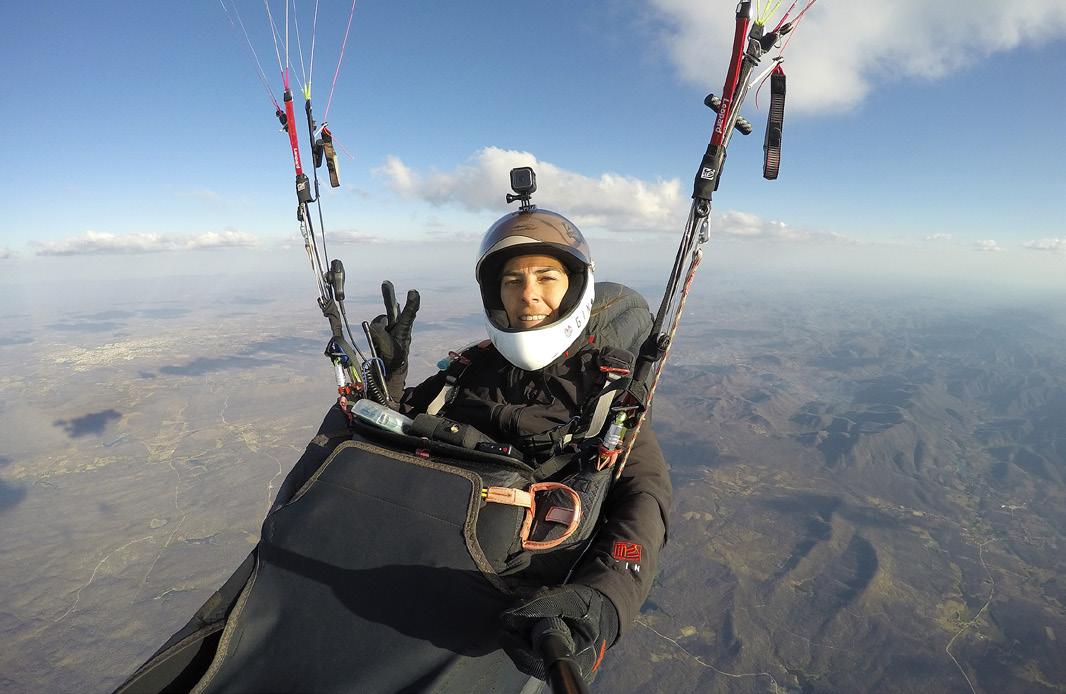
4 minute read
HOW TO… CHOOSE A TRIP

RADIO CONTROL School guiding in the French Alps
Photo: Marcus King
HOW TO… CHOOSE A TRIP
Advertisement
The difference between a good guide and a poor one is you having a great day and flying 100km, or bombing out and spending the rest of the day scratching at the dust with a stick while the rest of the pack flies overhead at base.
I’m lucky enough to have been on several different guided trips and advanced XC or SIV courses. Here are my top tips to make the most of your precious time and money.
1. Go with the people you know. If you are a new pilot who wants to fly as much as possible and build hours, then your school will often offer just this type of trip. The advantage is you know them and, more importantly, they know you. They will accommodate your shaky take-off style, know your strengths, and help you continue your progression safely.
2. Word of mouth is gold. For those looking to spread their wings, explore new places or go on an advanced training course, then it can be time to look beyond the school. Word of mouth really works here. Good, professional paragliding guides have spent many years building up their business and client list. They have many satisfied customers, and lots of repeat business. Ask other pilots who they have been away with, who they recommend and why. Research them online, then pick up the phone to find out more.
3. Know who will be guiding you. Guiding can struggle to be scalable. The guide with the good name is often in high demand, so they often take on other guides for certain trips. This is fine, but check who will be guiding your trip, and what their credentials are, so you are not disappointed. Good guides will be honest about this.
4. Do they speak your language? Flying takes up mental bandwidth, and having to deal with a new place, new pilots and radio chatter is enough. Whether going on holiday, an SIV or a guided vol-biv expedition, if you struggle to understand your guide mistakes in translation can easily happen. That can be inconvenient, or it can be a safety issue.
5. Don’t shop around on price (too much). Cheap flying holidays and guides come at a price, and it is usually poor logistics and frustrated flying days. Compared with other sports like mountain-guiding or off-piste skiguiding, paragliding guiding usually offers remarkably good value. The skills involved in shepherding you successfully and safely from A to B through 110km of open sky in Colombia are rare, and, again, the ones with a good reputation do charge a premium. It’s usually worth paying.
6. Know what you are getting. Is everything included, or are you just paying for the guiding? If so, how much will accommodation, travel, transport and food cost you? It can pay dividends in headspace to shell out a little bit more to have your own room, or stay in a slightly nicer place. Ask where most other pilots will be staying. On SIV and XC courses especially you can miss out on all the informal debriefing and knowledge-sharing that goes on if you choose to stay apart from the group. Go all in.
7. Ask questions before you sign up. Not things like “Will I need a jumper?” (the answer is always yes), but questions that help you decide if the trip is the right one for you. How big is the group? Who are the assistant guides? What will a typical day look like? What conditions can you expect? What happens if you bomb out? Have an accident? Is there helicopter rescue where you are going? (Don’t assume there will be). What about insurance?

UNDER INSTRUCTION Getting briefed ahead of an SIV tow flight above a lake, Australia
Photo: Tex Beck
8. Don’t bring work with you. It can be tempting to tell work you will only be an email away. Try not to. Flying takes a lot of focus, and to get the most out of your course you need to be present. Having to answer messages can ruin your day and will distract you. You’re paying to be there, so be there!
9. Consider a competition. For pilots who know how to fly XC, comps can be a good way of flying a new area with all the logistics taken care of. Land anywhere and get a retrieve – what could be better? Bear in mind you will probably only fly once a day though and if you bomb out that’s it. The beauty of a good guide is they will often have you flying a sled ride in the morning, going XC in the afternoon and then sunset soaring at the end of the day.
10. Every day is different, every day counts. You can have the best day on Day 1, and sit in the rain for the rest of the week. Fly when it is flyable, and avoid thinking, “I’ll do that tomorrow”. I remember once chewing my knuckles in frustration when a pilot on a course ordered paella for lunch in Spain (a three-hour meal) as pilots soared the cliffs behind. Once we made it to launch it was blown-out – and stayed that way for five days. Take advantage of every opportunity to fly a bit more, or go a bit further. If the guide says, “Do you want to…” just say Yes!
Ed Ewing










